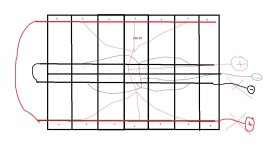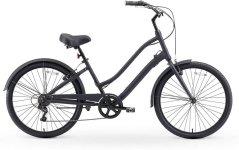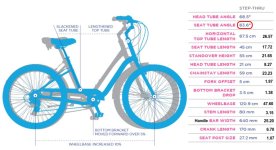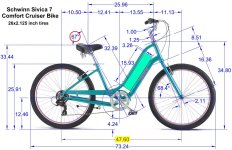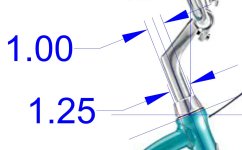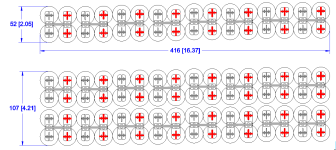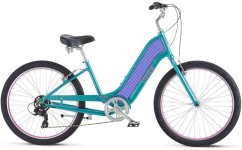18650
L = 65mm is 2.559055"
W = 18mm is 0.7086614
Add in spacing for 18650 holders makes it probably 21mm (0.8267717")
So you'd have plenty of breathing room from the top top bar to the lower "top" bar, 3.26"-2.56" = 0.80" of space
Just a matter of how wide you want the pack to be sticking out from each side along the top bars.
15.93" / 0.827" = 19 hopefully you could stuff an extra one in there to make it an even 20 so you can have two 10S lengthwise, from bb to headset. Then its a matter of how wide you want it
Then its a matter of figuring out which 18650 to buy, 25R, 35E.... depends on what discharge capabilities you want.
@3P and say 40A controller, you'd need a cell to do 13A so make it 15A
@4P and 40A controller, you need 10A so make it 15A.
@6P and 40A you'd need 6.5A
@8P you'd need 5A
35E is 8A but 3.5Ah
25R is 20A and 2.5Ah
Sony VTC6 18650 3000mAh 15A
Samsung 30Q 18650 3000mAh 15A
LG HG2 INR 18650 3000mAh 20A
Remember you dont want your cells to work hard so round up generously. @8P being 5A just skip the 35E and find a 10A 18650
Sanyo NCR18650GA 3500mAh 10A
And say for 6P 6.5A go 15A 18650.
I will jive together a pic, as you can see the 18650 are standing upright on the bottom top bar.
Thats why you'd kinda want to fit 20S in there.
Then its a matter of how wide you want it, how many Parallel which gives your Ah.
So 1P would basically be a bit smaller then the width of the frame tube.
3 wide is 10S6P (60-18650's) sticking out 15mm each side.
5 wide is 10S10P (100-18650's) sticking out 33mm each side.
7 wide is 10S14P (140-18650's) sticking out 51mm each side.
Of course cost of 18650 cell will play a role in what you choose, along with the research others have done.
I like the 25R at 2.5Ah and 20A but would be overkill for your 10S6P and pack when your using 40A controller. But they'd wouldnt be stressed at all either. Unlike if you go 35E with 8A.
Lots of work to build your own battery, but it will be a nice sleek, stealthy look to shove the battery between the two top tubes.
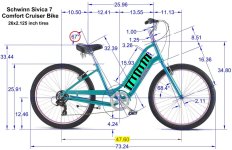
Bettery config, where is says 10S1P thats your center of the frame tube. To me it would seem a bit imbalanced, because the cells at the far end the electrons have a longer way to travel (top right) then the cells at the battery leads to the controller that you see on the bottom right. I'd try to connect a few wires at evenly spaced lengths along the same power rail and connect them all together, then have it go out as your main battery wire. I will try to do another pic for ya.

Crude I know, but its evenly spaced out. Tapping into the + rail at even lengths, same for - rail. Of course all my handiwork, goes out the window if you want 20S voltage, but I doubt your into that kind of speed. You could do 52V 14S or 48V 13S for a smaller pack with much more room above and below, then no connecting wire on the left hand side
